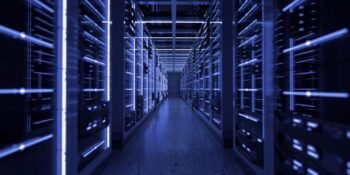Threat hunting is a proactive cybersecurity approach that focuses on identifying and mitigating security threats before they manifest into full-scale attacks. Unlike traditional security measures that rely on passive defense mechanisms, threat hunting involves actively searching for signs of malicious activity within an organization’s network, endpoints, and systems. By leveraging advanced analytics, threat intelligence, and human expertise, threat hunters seek to detect, analyze, and neutralize potential threats to protect critical assets and maintain the integrity of the organization’s digital infrastructure.
Understanding the Threat Landscape
In today’s rapidly evolving threat landscape, organizations face many sophisticated and persistent cyber threats, including malware, ransomware, insider threats, and advanced persistent threats (APTs). These threats are constantly evolving and adapting to bypass traditional security controls, making them difficult to detect and mitigate using conventional methods.
Threat hunting provides organizations with a proactive defense strategy that allows them to stay one step ahead of cyber adversaries by identifying and neutralizing threats before they can cause harm.
Proactive Detection and Response
The primary goal of threat hunting is to proactively detect and respond to security threats that may evade traditional security defenses. Threat hunters leverage a combination of automated tools, threat intelligence feeds, and human expertise to search for indicators of compromise (IOCs), abnormal behavior, and suspicious patterns within the organization’s network and endpoints.
By analyzing telemetry data, network traffic, and system logs, threat hunters can identify potential threats, investigate security incidents, and initiate timely response actions to mitigate risk and minimize impact.
Leveraging Advanced Analytics and Machine Learning
Threat hunting relies on advanced analytics and machine learning algorithms to recognize and prioritize potential threats more effectively. These technologies enable threat hunters to analyze large volumes of data, detect subtle anomalies, and identify patterns indicative of malicious activity.
By correlating disparate data sources and applying behavioral analytics, threat hunters can uncover hidden threats that may evade traditional signature-based detection methods. Additionally, machine learning models can enhance threat detection capabilities by continuously learning from new data and adjusting to evolving threats in real-time.
Collaboration and Knowledge Sharing
Effective threat hunting requires collaboration and knowledge sharing across security teams, IT departments, and business units within the organization. Threat hunters work closely with incident response teams, security analysts, and system administrators to share insights, coordinate response efforts, and disseminate threat intelligence throughout the organization.
By fostering a culture of collaboration and data sharing, organizations can enhance their collective defense capabilities and respond more effectively to emerging threats.
Conclusion
Threat hunting is a vital component of modern cybersecurity strategies, enabling organizations to detect and respond to security threats in real-time proactively. By adopting a proactive approach to threat detection and response, organizations can stay ahead of cyber adversaries, mitigate risk, and protect critical assets from emerging threats.
Leveraging advanced analytics, threat intelligence, and human expertise, threat hunting empowers organizations to uncover hidden dangers, strengthen their security posture, and maintain trust and confidence in an increasingly complex and interconnected digital landscape. As cyber threats continue to evolve and grow in sophistication, threat hunting will remain an essential tool for organizations looking to defend against emerging threats and safeguard their digital assets effectively.










